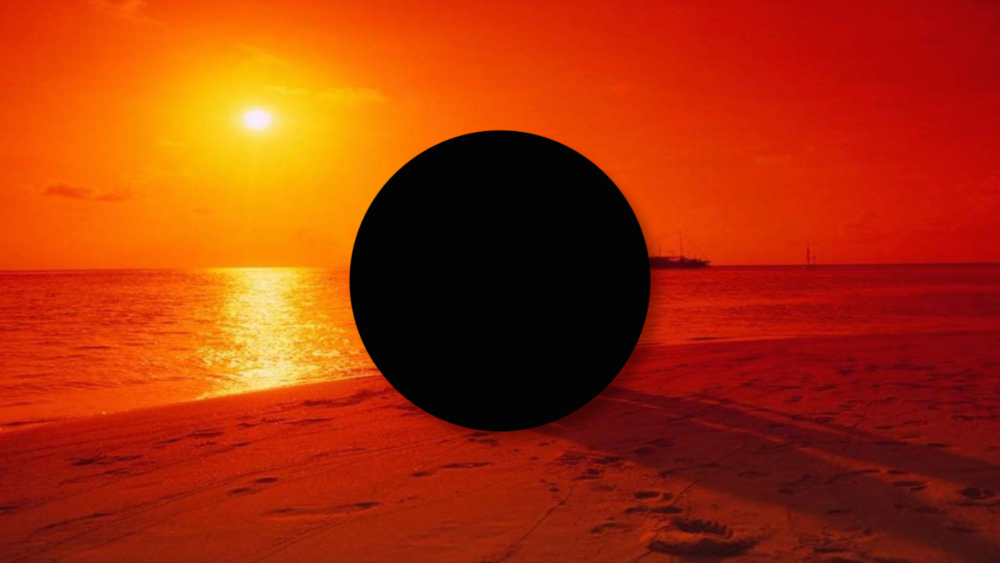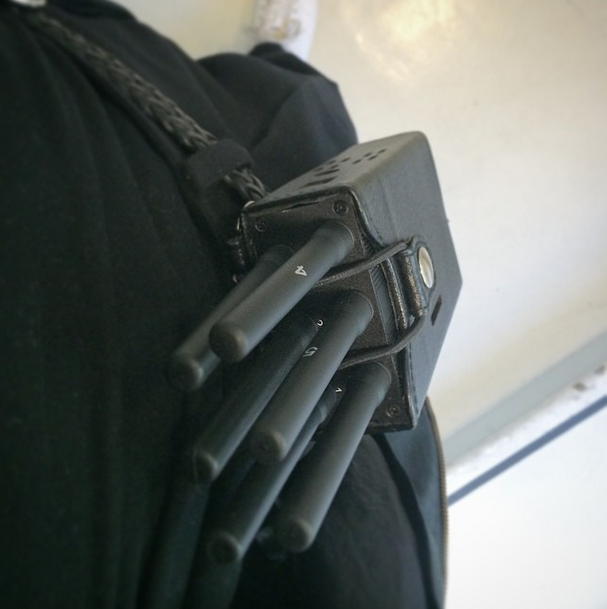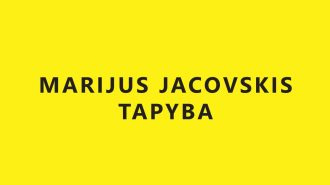
On 4-6 September, Kunsthall Oslo held a three-day performance and screening programme Soft City featuring Dark Pool by Lithuanian artist Ignas Krunglevičius. Dark Pool involves an accomplice wandering in the city with a hidden radio frequency jammer that disrupts 3G, GSM and WiFi signals. Digital mobile communication will be impossible within 10m of the anonymous performer. As Krunglevičius says, “When you have a device like this in your hands, almost nothing can disturb you or reveal where you are.” On 5 September at Kunstnernes Hus Krunglevičius presented a new video work that sets the context for the ongoing Dark Pool performance. Artist – curator Ayatgali Tuleubek talks to the artist.
Ayatgali Tuleubek: It was very interesting to see how your work developed over time. You just had a show at Soft City last week where you used the frequency jammer as in one of your previous versions of the Dark Pool piece, only now you incorporated it in a new form of performance. What process did you go through that resulted in reshaping the project in this particular way?
Ignas Krunglevičius: After exhibiting this piece at the “Derivatives” exhibition in Moss (N) last year, I realised that focusing on an actual device was not very interesting for me anymore and I needed an extra component which would activate the work in a more complex way. I decided to make several video pieces in a form of advertisement. I made three ads of the “company” called Dark Pool which is allegedly selling these devises. The text for the ads was appropriated from the anti-technology movement called Neo-Luddite, involving the context in which these jammers are actually used. Two of these ads are in a form of an attack ad, similar to political campaign ads, and one is a classical sales commercial, delivering the sales “payload”. With the introduction of the video to this project I was hoping to turn the focus away from the actual device onto the situation instead.
Did you intend to express irony by using the language of corporate media?
Well, I was not being ironic, it was more of an attempt to reveal the discrepancy. People who make and buy these jamming devices are mostly silent and not very visible on the internet. The products they buy are sold to them by companies in this very specific, raw, lo-fi way, hidden as if in the dark side of the web since they don’t advertise in mainstream media. The corporate airport train type of commercial is a total opposite to the language these Neo-Luddite groups use. So it was clear to me that the Dark Pool company should look more like a international corporation – stock images, stock sound, clear message, beautiful voiceover. But yes, even though I tried not to be ironic about it, it still came out.
These Neo-Luddites and other groups, I’ve never heard about them actually, suppose they are not a typical NGO?
No, they are not. In essence, these groups are sceptical about the positivity of rapid technological development and they are fighting it. And I wanted to critique them by putting their message in a corporate language, saying that they are not any different from Apple or Samsung, that Neo–Luddites are a business as well. They have branding, logistics and manufacturing, and the product they “sell” is ideology.

I have an impression that questions revolving around technology have become one of the central points in the global discussion. Artists also seem to cease being overwhelmed by technology and are instead approaching the topic with a certain criticality. Is there a reason why technology interests you as an artist?
Our reality is more and more mediated by technology: user interfaces, dashboards, voice recognition, algorithms, etc. I feel I don’t have a choice; what I mean is that these things that we are surrounded with affect how we materialise our ideas. So since LCD screens and computers are the objects I interact with the most, these objects are used in my work. Obviously, we can go deeper in the matter of technology, the politics of it, but that is rather a consequence, the effect of interaction with technology.
It has been a few years since questions on technological development became pertinent, brought to focus by the likes of WikiLeaks, Edward Snowden and also the incident just last week where iCloud accounts of some celebrities were hacked. What should be the ethical stand one should take towards this and what kind of artistic strategies would be effective and what is the role of art in all this? Do we have to become Luddites?
Indeed, the iCloud leak was a very offensive action. The future we are building for ourselves is getting so strange that we hardly have words to describe it. We know that this future is imminent and we feel an unusual mix of excitement and anxiety about it. So no, Luddites are wrong, we can’t go back to the old safe past of the pre-internet era. It is not technology per se which is making the change but the economy behind it. For example, a new convergent of this development – the internet of things. Just a couple of days ago, Apple released a new thing – the Apple watch. It is not just an electronic version of the old watch, but a whole new territory for market forces to commodify. It will know your heart’s BPM, how fast we really run and where we will do our shopping tomorrow. It is a tool for instrumentalising the human body. And there will be more of this later – sensors in the house, the fridge, a cat. This is not the era of imaginary cyberpunk of the 90’s, but a real situation with certain political and economical conditions which affect most of us, not to mention the celebrities.
And then there are things like the Bitcoin or Twitter’s role in the Arab spring, anonymous communities on the net and many more. They give hope or illusion to some people that they will become a tool for tectonic shifts in the society. For instance, solutions to global warming caused by industrialisation seem to only come from further development of engineering and technology. Maybe there is a bright future in there?
Talking about the Arab spring, I don’t think it came from Twitter, but from actual economic and political situation in the countries. Social media helped to accelerate, but it didn’t play a crucial role. I think we put too much importance on the media. US data companies don’t drive Arabs to revolt and Anonymous hacker group will not fix our atmosphere. Indeed, the solutions for planetary-scale problems will need planetary-scale engineering.
Transhumanists, Kurtzweil with his singularity project also believe that technology will save us all and that it is our mission to accelerate this technological development. Of course, the belief in technological progress has been present for a long time and is widespread among general public, but when you look at some tech communities, you get the impression of a huge sect or even a religion.
That imaginary moment, supposedly only a few decades away, when technological change will have become so extreme that, as Ray Kurzweil said, it will “rupture the fabric of human history” and “we will transcend biology, but not our humanity”. This is a techno-utopian fantasy of the End of History, sort of a religious vision for atheists. “The Rapture of the Nerds”. Luckily, it sounds more like a male-adolescent fantasy of omnipotence than actual scalable reality. But yes, if we’re going to be wired to the gills, brains and bodies augmented by means of surgical implants, genetic and chemical tweaks, overclocked metabolisms, and optimized neural architecture – why not, sounds cool. This kind of development opens new territories to explore. As an artist, I’m looking for generative situations, the fuel for art making. Be it the singularity project, Neo–Luddites, police interrogations, political speeches, techno or group therapy. People and the contexts they inhabit are my gasoline from which I make my napalm.
Let it burn. Thank you.
Ignas Krunglevičius was born in Kaunas, Lithuania, and lives and works in Oslo. He recently exhibited his work in the Nordic pavilion at the Venice Biennial of Architecture, 2014, Crime in Art at the Museum of Contemporary Art, Krakow, and at You Imagine What You Desire, the 19th Sydney Biennial, 2014.
























